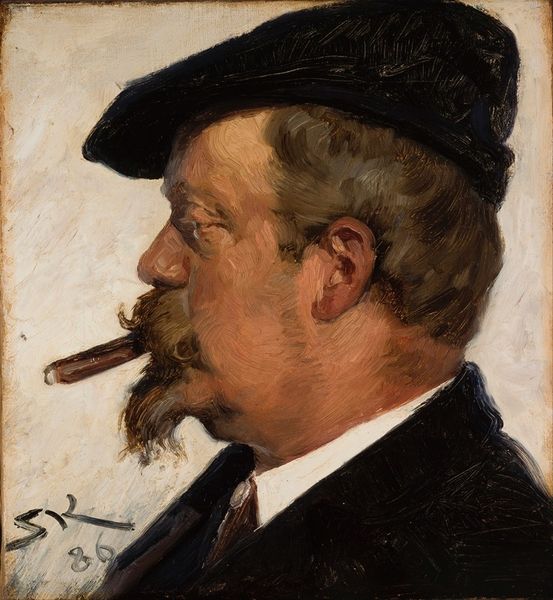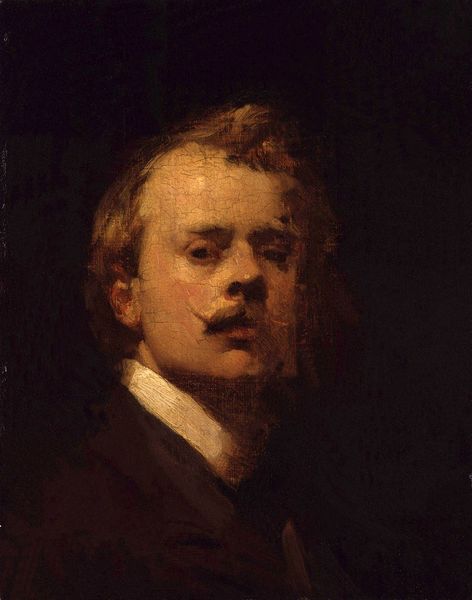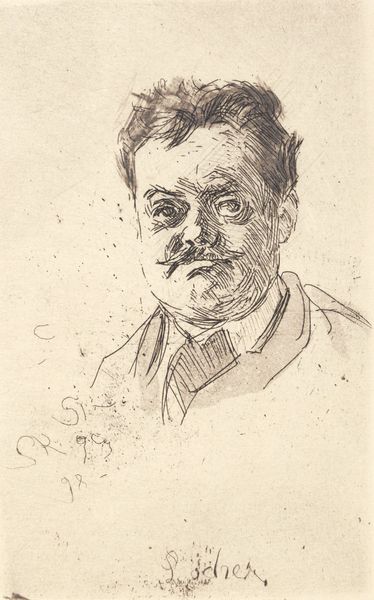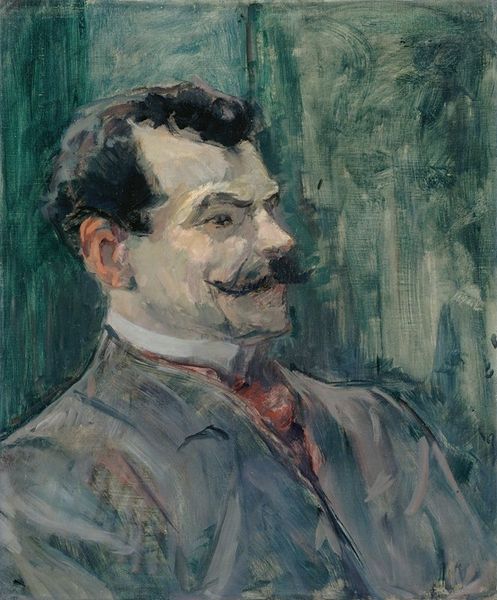
Dimensions: height 170 mm, width 124 mm
Copyright: Rijks Museum: Open Domain
Curator: David Oyens created this "Portret van Pieter Oyens (Een bon-vivant)" sometime before 1892. It's currently held in the collection of the Rijksmuseum. What’s striking to you upon first viewing? Editor: The portrait is definitely captivating, although perhaps not conventionally beautiful. I am drawn to the softness of the medium - it must be a painting, watercolor maybe? - giving a gentle touch to the figure, which tempers the apparent robustness suggested by the individual’s physique. Curator: Indeed. While its listing describes an oil painting, there’s something of watercolor about the textures. The subject's expression is rather enigmatic. This invites us to question the narrative it's presenting about identity and societal expectations. Oyens challenges us to decode this character's story beyond surface-level impressions. Editor: Absolutely, there's a deliberate construction of identity at play here. I find myself wondering about the choices Oyens made in portraying his sitter. How might prevailing social norms regarding masculinity have influenced this depiction of a bon-vivant? Did he deliberately lean into or subvert certain tropes? Curator: We must remember that portraits were often tools of constructing, reinforcing or challenging social power. And with that we have to investigate questions of representation - both how Pieter wanted to be represented, and how David Oyens interpreted that. What power dynamics shaped their interaction and subsequently, this portrait? What stories are prioritized in our historical understanding and what are erased? Editor: I appreciate that framing, considering what the piece is telling us, but more so, what the work is not telling us, and why. So fascinating to me. Curator: Precisely, it’s about excavating the silences and the unseen, and questioning whose voices have historically dominated art historical discourse. Editor: Considering how deeply entangled portraiture is within larger socio-political systems of representation allows us to read it with renewed, critical eyes. Thank you, that gave me so much food for thought!
Comments
No comments
Be the first to comment and join the conversation on the ultimate creative platform.













